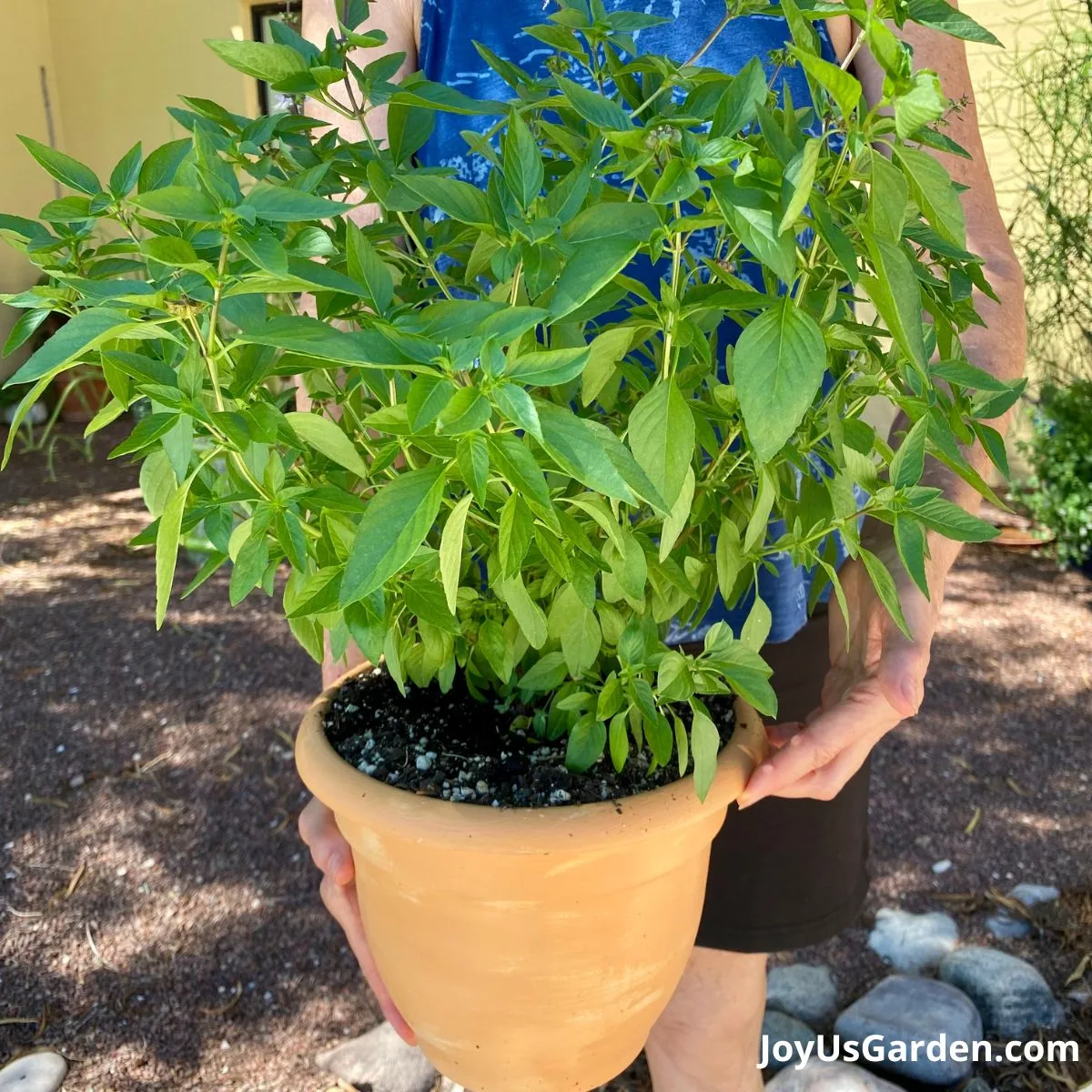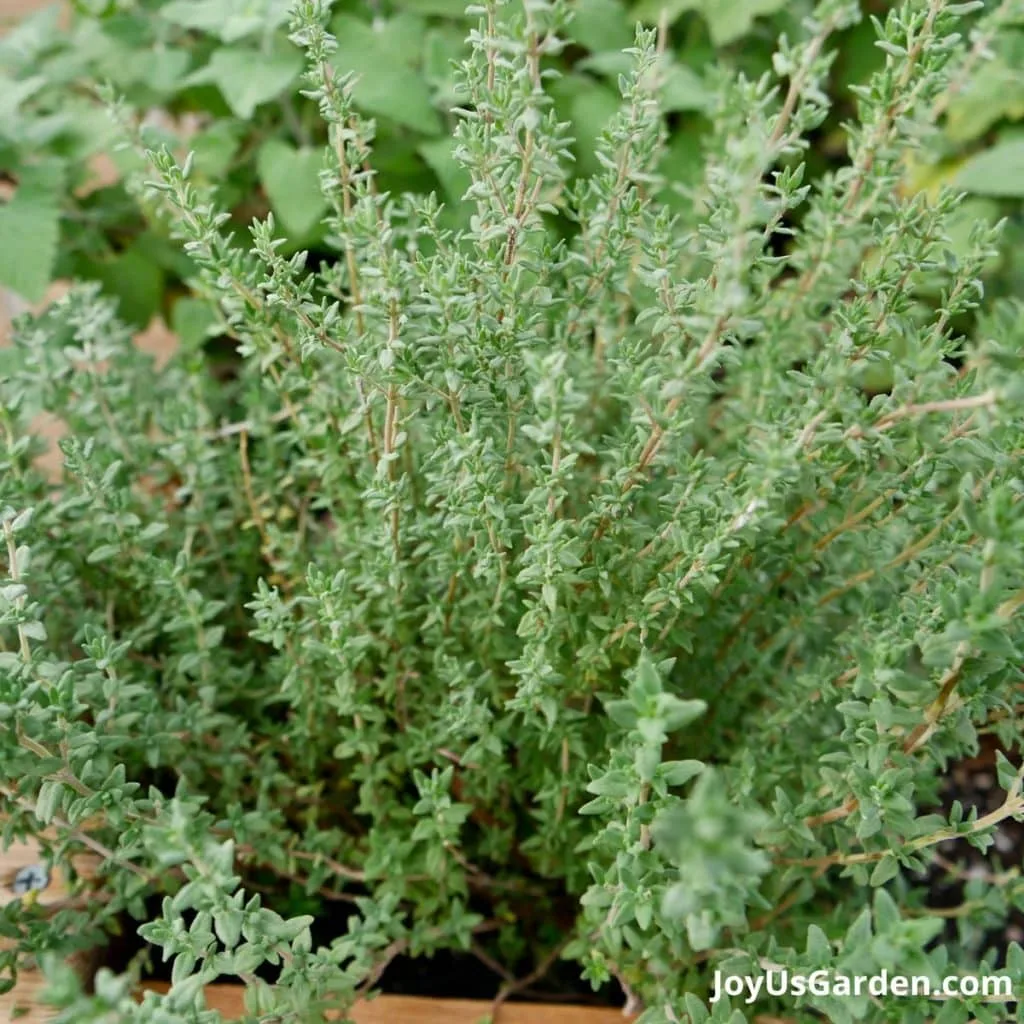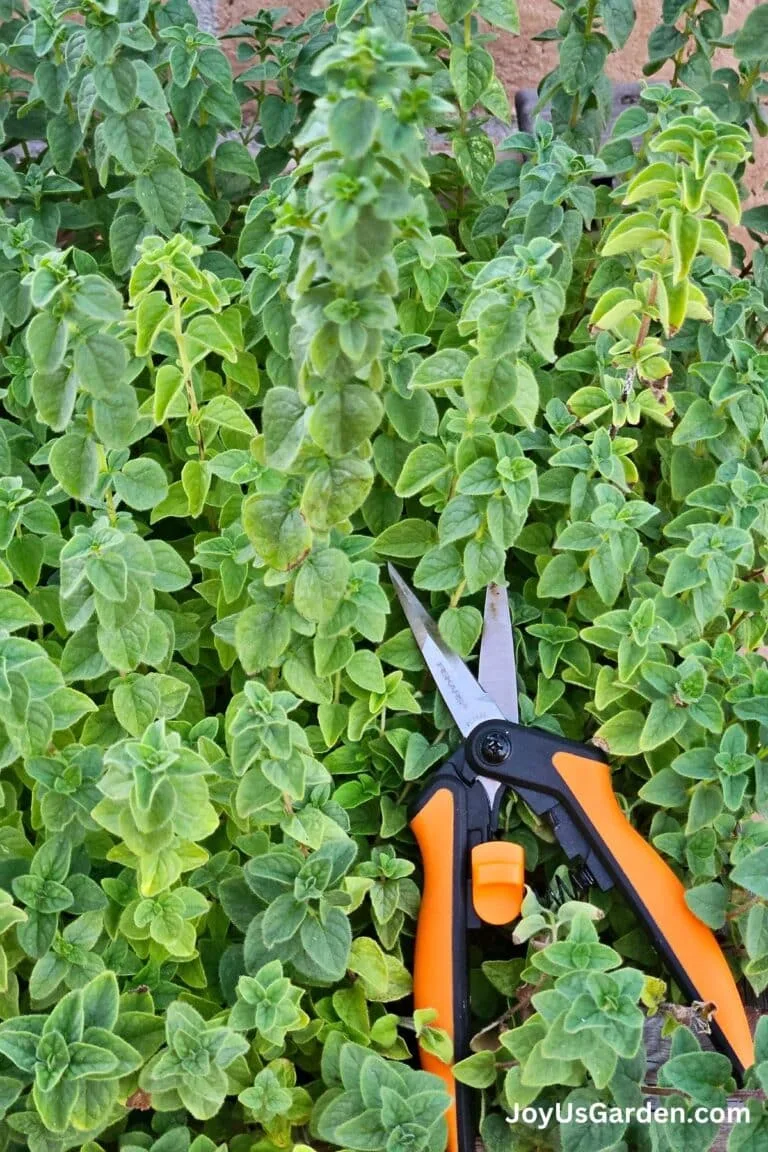Top 13 Herbs For Full Sun
All plants love the sun and will take as much as they can get— right? Well, not quite.
If you’re new to the world of being a green thumb (and you’re starting to get good at it too), one thing you’ll learn is that plants have their preferences. While some perennial herbs love full sun, others may prefer partial or even complete shade instead (and may love moist soil, too). If you plant the latter in the full sun, they may wither and crisp. Vice versa and a full sun-loving plant will languish in that beautiful but too-shady spot.
So, before you plug that useful herb right in the sunniest part of your space to grow, think twice. Is that actually what they want? How can you know?
Well, a great place to start is right here: learn about the top 13 herbs that love full sun. That way, you know what plants to put in that super sunny spot of yours to get direct sunlight, as well as which plants to keep out of the shade.
How to Get Your Full Sun Herb Garden Started
Don’t be daunted! Once you start getting your hands dirty, planting an herb garden— whether in container gardens, a sunny windowsill, or your backyard— becomes a breeze the more you dig into it.
Here are some simple tools to help you get started:
- Rich soil, organic matter
- Fresh herbs of choice (ideally choices from this article)
- Small pots with good drainage, remove excess water OR;
- Window box, OR;
- Garden beds
Fill your container (or containers) of choice— whether small pots, containers, window boxes, or garden bed— with soil or maybe even a finished compost or other natural fertilizer before planting your herbs.
You can start your herbs directly from seed right in the pot, or transplant a young herb plant into the pot by digging a shallow hole and covering its roots thoroughly.
Next, place the containers, pots, or window box in the sunniest area possible, and water them immediately and regularly depending on the specific plant’s or seed’s needs.
If you are growing out of garden beds (whether raised beds or straight into the ground) make sure you create them in a sunny area if the plant is to have them fixed and immobile!
Want more on herbs? 26 Best Herbs To Grow In Your Own Herbal Tea Garden, 16 Plants & Herbs That Repel Mosquitoes
What Herbs Like Full Sun
With tools to start your herb garden on hand, what’s next? Every herb plant and herb seed must be treated differently for the same success, even if each of them does prefer the full sun.
For a quick guide on how to get started and an intro to each full sun-loving herb, here are the 13 that are best known for full sun preference— though this certainly isn’t a comprehensive list!

Aloe Vera (Aloe vera barbadensis)
This desert plant needs hardly a lick of water and can be a challenge to start from seed— though some have succeeded. You are more likely to get your hands on a baby aloe from someone’s mother plant to transplant, and it’s very easy to propagate these!
Choose a light, sandy soil that drains quickly, and gives this desert lover dry conditions. This is aloe’s preference: water plants only occasionally and lightly. Harvest leaves (not too many or all at once) and apply the inner gel for burns, cuts, and bug bites.
Aloe Vera can be grown indoors & outdoors. Check out this guide on Aloe Vera Care. Interested in how to use Aloe Vera? 7 Ways To Use Aloe Vera Leaves. Aloe Vera 101 is a round-up of our growing posts. Have questions about Aloe Vera? We answer them here.

Basil (Ocimum basilicum)
Basil is the favorite of summer lovers and fanatics of Italian food. Incredibly easy to start from seed— if you can bring on the heat! Soil temps need to settle around 70F for basil to reliably sprout, as basil is a denizen of warm climates. Transplanting it is possible, though be careful as the plant can be delicate.
Basil loves very fertile well-draining soil, tons of water, and TONS of heat and humidity along with full sunlight. Once temperatures reach below 50F, basil will become damaged or die.

Chamomile (Matricaria recutita)
You won’t be able to resist the aroma of chamomile once you add it to your garden. According to many tea lovers and herbalists, it’s one of the best herbs to grow for tea! Though it’s not a perennial herb that will return again and again every year, it is a self-seeding annual, meaning that with little work you’ll have a trusty patch that comes back every spring.
Starting chamomile from seed by sowing it thickly is the best option. It enjoys fertile soil but doesn’t prefer a lot of moisture so no need to water it excessively— though do be sure to check up on it.
Chives (Allium schoenoprasum)
No matter where you plant it, chives are bound to be happy, whether it’s in the full-blown sun or partial shade. It can even withstand full shade in the right conditions! To get a patch going, plant it by seed in a small container or planter, and watch it grow.
It prefers regular water and very fertile, rich soil so you can continue to regularly pick these delightful onion-flavored, grassy herbs for dips, baked potatoes, salads, and much more.
Cilantro (Coriandrum sativum)
What salsa lover doesn’t enjoy cilantro? The only challenge is that cilantro basks in full sun, but prefers slightly cooler temperatures— not the full-on heat of summer. Or else it will bolt (go to seed), and there goes the flavor! To plant this delicate summery herb, sow its easy-to-handle seeds in shallow soil.
It can thrive in many types of soils, from light and sandy to rich and fertile. With just a little bit of effort, you’ll have that tangy herbal topping for your salsa and tacos in no time.

Lavender (Lavandula angustifolia)
Lavender is the poster child of full sun-loving herbs. In fact, these divinely fragrant purple flowers will flourish in nothing but— it needs several hours of sun per day! So be sure that any lavender you grow, no matter the variety, is positioned in as much direct sunlight as possible.
On the plus side, you don’t need to give lavender very much in order for it to put on its violet display every summer: it doesn’t need a whole lot of water, and it doesn’t need much fertility. Start it from seed for the best results.
Do You Love Lavender? Check Out These Guides: Planting Lavender In Pots, Answering Your Questions About Growing Lavender
Lemon Balm (Melissa officinalis)
Think “mint-meets-citrus.” The perfect herb for summer, and mojito season! Lemon balm is not only flavorful, but it also boasts an impressive reputation for healing digestive upset, untangling anxiety, and even supporting mild depression issues.
For an herb that brightens up life so much, it’s no surprise it LOVES full sun. Start this plant from seed and watch it take off with ease in practically any soil type. It’s related to mints, so grows vigorously— watch out!

Mint (Mentha spp.)
Mints are a wide category of plants, and despite their reputation for being hardy and vigorous, there’s no contest that they love the full sun more than any other growing situation. This includes peppermint, spearmint, chocolate mint, orange mint, and more.
Whether growing them from seed or simple cuttings from already mature plants, getting them started successfully is easy— and in any type of soil no less.
More On Mint: How To Care For Mint, Tips For Growing Mint, How To Prune & Feed Mint

Oregano (Origanum vulgare)
If you wish to keep oregano nice and compact, keep it in partial shade. If you want it to grow to tremendous size and enjoy its incredible bounty for pasta sauces and pizza— put this one in the full sun. It loves it, and you won’t be disappointed.
The plant will spread and grow nearly four feet tall with aromatic, spicy yellow flowers. Start it from seed and watch it thrive in any soil type with very low water and fertility needs.
Does Your Oregano Need Pruning? Here’s Your Guide: Pruning An Oregano Plant

Parsley (Petroselinum crispum)
Never underestimate parsley! Though this herb often goes overlooked, it’s essential for many Greek and Mediterranean dishes. What would tabbouleh be without it? It also boasts antihistamine properties, incredible nutrients, antioxidants, and digestive properties.
Reserve this easy-to-grow herb for the sunniest part of your garden and you’ll be impressed by this plant’s veracity while needing very little water and not much in the way of fertility.

Rosemary (Rosmarinus officinalis)
In warm and hot climates, rosemary can become an incredible perennial evergreen herb when planted in the perfect full sun position. In other climates and in shady areas, better protect it! Much like its close relative, lavender, rosemary basks in direct sunlight for the best results and has the ability to harvest sprigs of rosemary whenever you’d like.
As a classic herb from the Mediterranean region, it can handle poor soils with little fertility and scant moisture and still do quite well.
Rosemary comes in many sizes & forms & is also a useful perennial landscape shrub. More info: Growing Rosemary: How To Care For This Culinary Shrub

Sage (Salvia officinalis)
You simply won’t get a lot of harvestable garden sage for meat, potato, and other dishes if you plant this one in the shade. Make sure to plant it in full sunlight, whether directly in your garden, in a container, raised bed, window box, planter, or other. Other than that strong direct sun, it won’t need much else!
Start your sage from seed for good results though if you know the trick, planting from cuttings from mature plants can work even better.
There are many species & varieties of Salvias found the world over. They all benefit from pruning. More info: Pruning 3 Different Types Of Salvias, Pruning Perennial Salvias, Pruning 2 Woody Salvias

Thyme (Thymus vulgaris)
Thyme is a tiny yet tasty herb, its fresh leaves are a popular spice in a wide array of dishes. No matter its size, it will always prefer full sun in order to completely spread its wings! Though it can and does tolerate some partial shade.
No big requirements for this Mediterranean herb, either: it can handle low fertility, light soil, sand, and only occasional watering, though it certainly doesn’t like to be abandoned. Make sure to keep a good eye on it regularly.
Herbs For Full Sun FAQ’s
Can herbs get too much sun?
Yes, but it depends on the herb. Herbs and plants you should be most concerned about are newly transplanted babies and seedlings that have been grown indoors. When you move them to full sun and plant them outside, be sure to transition them slowly— they can be affected by sunburn and experience damage, much like us!
When growing herbs from seed indoors and then hoping to have them outside in direct, intense sunlight all day, be sure to make the change slowly (through a process of bringing plants outdoors called “hardening off”).
What herbs tolerate full sun AND high heat?
Some herbs are captivated by lots of sun AND heat, but just because a plant is a sun-lover doesn’t mean it loves lots of heat too. Take cilantro, parsley, mints, and chamomile for example— these plants may become damaged or “bolt” (go to seed) when dealing with excess heat.
For both full sun AND heat, be sure to grow basil. This Mediterranean herb loves both. Generally speaking, most Mediterranean herbs love heat and sun, like thyme, sage, rosemary, and oregano.
What are your favorite herbs to grow in full sun? How do you use them?





